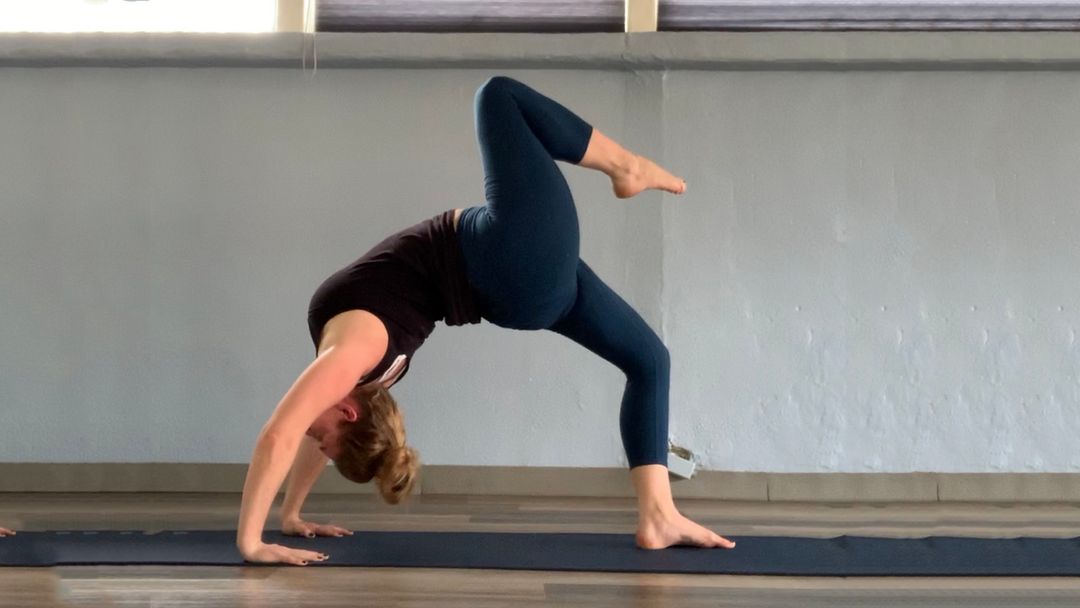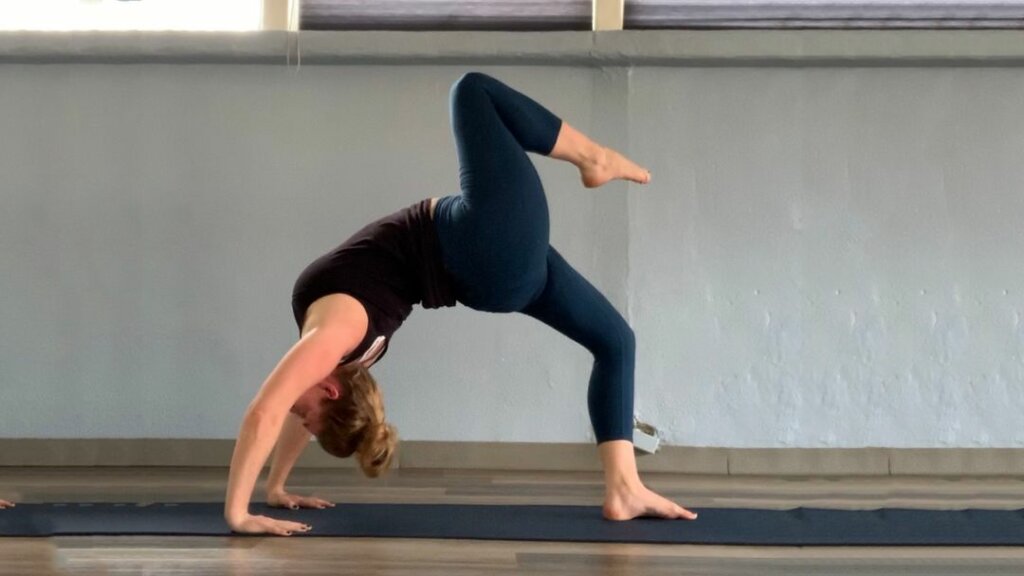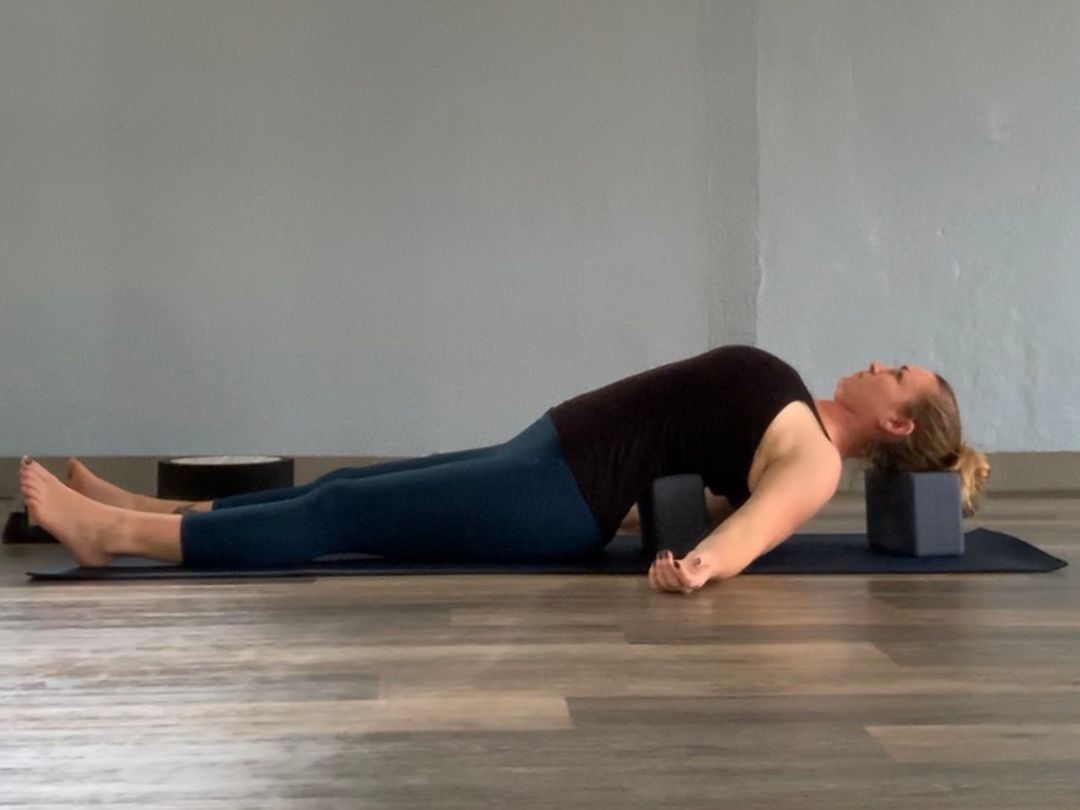Wheel Pose Anatomy
There are some anatomical pieces to take into consideration when progressing from Bridge Pose to Wheel Pose. Yes, stretching and taking it slow with elasticity and strength training as outlined below is helpful, however remember that you have bones underneath all that soft tissue and your bones are not going to change.
In Wheel we are looking at the shoulder joint, specifically where your upper arm bone (humorous) touches the top tip of your shoulder blade (the acromion). This dictates, in large part, where you will land in Wheel with regards to the back bend as well as the shoulder opener.
Add to that how much rotation you have in your arms and that will dictate how close your arms are to your head and whether you bend your elbows or not.
You can stretch out and strengthen the soft tissues all you like, but ultimately the bones are in charge. This is something to sit with and learn to be compassionate and non judgemental around.
In the meantime, here is a little progression you can use to stretch and strengthen your backbend rather then punish your shoulders. This will press you closer towards what your bodies bones will allow for in Wheel.
1. Warm Up
Cobra
None of the weight is in your hands in Cobra, even if they are touching the ground. Your breath and back muscles are what is lifting your torso up. This is very strengthening for the back muscles too which makes the backbend itself feel better.
Belly Bow
Tuck a block wrapped in a blanket under your ribs and reach back for your feet. Press your thighs into the ground to ensure you are powering up. Then later remove the block and come up again without it- this time lift your thighs and your heart. This shape will begin stretching out your frontal plane as it prepares your back for the compression of full Wheel.
Fish
Fish pose, with or without a block is a great way to deepen the middle spine back bend which is where you want the majority of the back bend to come from because that is the most stable part of the spine. Essentially this means you are lifting from your heart. Try it with your block between your shoulder blades, or a little lower at your lumbar.
2. Use your Bridge Pose
With a Block:
Scoot a block under your hips or under your low back for a supported version. Simply relaxing your entire body over the prop like a blanket. Straighten your legs and lift your arms up and over your head to get a full body stretch. All of this draping is opening up the soft tissues of the back and frontal plane so spend some time here. In Yin yoga they would stay put for 2 minutes in each shape.
With Your Mat:
Once you come to an unsupported bridge (with no block), tuck your elbows very deep underneath you or pull on the edges of your mat so that you can feel your shoulder blades reaching together under you and your heart lifting. This sensation is indicative of the middle back holding the backbend rather then your neck or low back
3. Modify Your Wheel
Wall Wheel
For folks with a smaller range of motion in the shoulders and wrists this is a nice way to experience the straight arms and full chest expansion. As pictured the blocks are at an angle resting on a baseboard so make sure your base board is VERY secure. When you come up press your thighs together as if holding a block and shine your heart upwards just like all the other backbends your heart is lifting you.
Using this little progression each time you practice will take you closer to your bodies full range of motion in Wheel. Just remember to be compassionate around your shoulders. Good luck and Namaste!










